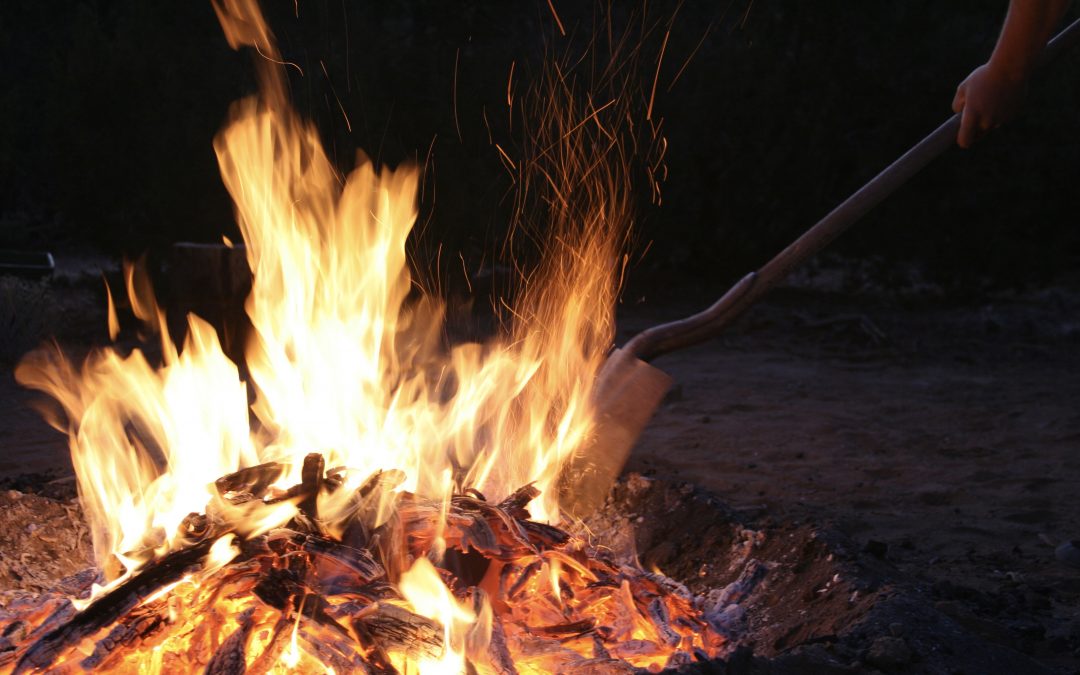Guest post by Emily Santhanam, 2020–2021 SAR Anne Ray Intern
Walking toward the crowd, I felt a burn of energy in the air. People were gathered together, drawn to the unlit firepit at the back of SAR’s King Residence. A late afternoon sunshine warmed the ground and gilded the trees as Brandon Adriano Ortiz-Concha—2021 Rollin and Mary Ella King Native artist fellow, aspiring architect, and historic preservationist—prepared the earth for his fifth firing on campus, opening his process to the community.



Brandon Ortiz-Concha preparing and firing his micaceous-clay pottery, SAR campus, November 2021. All photos by Emily Santhanam.
When Ortiz-Concha talks about his relationship with clay, he conveys a clear sense of reverence and respect. He sees the act of gathering clay and forming vessels as a moment of intervention in millions of years of geological processes, something not to be taken lightly. When he digs for clay where the road turns to glitter—“a good sign,” he says, for sourcing micaceous clay—Ortiz-Concha leaves offerings to the land. From there, he spends time processing the clay, removing twigs, leaves, rocks, and trash, while taking care to leave the majority of the mica. He dries the clay, wedges it, and months later begins building with it: in full, Ortiz-Concha follows over twelve steps to create a functional vessel. It’s a practice that can’t be rushed. This is especially true for Ortiz-Concha, who, like many Native American potters, believes clay can embody the feelings of those touching it:
[The clay] will hold the emotions and the thoughts of you when you’re working with it . . . it’s a conversation between you and the clay, and it’s important to work only when you’re in a good head space.
Though Ortiz-Concha tends to build his pots with a form in mind, he doesn’t downplay the influence of the clay. “The nature of the clay always has something to say,” he explains, “and the shape usually says when it’s finished.” It’s this intuitive approach that guides much of Ortiz-Concha’s work, specifically when the firing begins. For years, he saw his own thoughts and emotions emerge through the smoke clouds that covered his pots. There was a passive engagement with decoration, a trusting of fire, cedar, and carbon to stylize a vessel. Yet through his recent artist project at SAR, “Conversations with Clouds,” Ortiz-Concha has explored what it means to pursue a more mutual dialogue with micaceous clay.



Watching Ortiz-Concha during his firing felt like witnessing a relationship unfold. He and the pots seemed to be in conversation as he added them to the coal base, built up the fire, covered the pit in thinly split cedar, and waited for the clouds to speak. “This is the most difficult part of the process,” he said, “controlling your emotions. We have to let go of it and just listen to the fire.”
That evening, as chatter dissolved with sunset, we breathed in cedar and listened.


